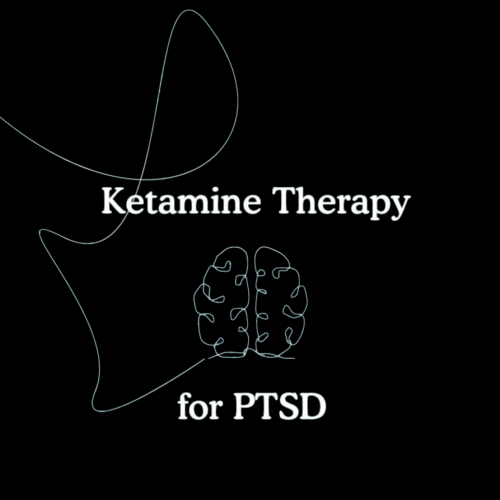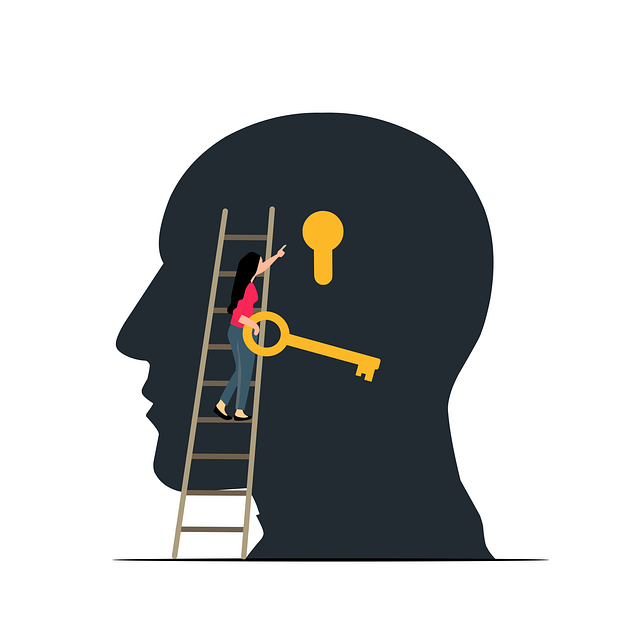Introduction
Borderline Personality Disorder (BPD) is one of the most challenging and emotionally intense mental health conditions to treat. Characterized by unstable moods, self-image issues, impulsivity, and turbulent relationships, BPD affects not only the individual but also their loved ones and treatment providers.

For decades, psychotherapy has been the foundation of recovery for people with BPD. While medications can help with co-occurring symptoms like anxiety or depression, no pill directly treats the disorder’s core — the instability of emotions, relationships, and identity. That’s why psychotherapy remains the most effective and evidence-based approach.
This article explores what psychotherapy for Borderline Personality Disorder involves, the best treatment types, the core principles guiding therapy (such as the “3 C’s”), and strategies for emotional regulation and long-term healing.
What Is Borderline Personality Disorder (BPD)?
Borderline Personality Disorder is defined in the Diagnostic and Statistical Manual of Mental Disorders (DSM-5) as a pervasive pattern of instability in interpersonal relationships, self-image, and affects, coupled with marked impulsivity.
Individuals with BPD may experience intense emotional swings, fear of abandonment, chronic emptiness, or self-destructive behaviors. Small stressors can trigger overwhelming emotions, and relationships often shift between closeness and conflict.
Common symptoms include:
- Rapid mood changes and emotional reactivity
- Unstable relationships and fear of rejection
- Impulsive behaviors (spending, eating, substance use)
- Self-harming or suicidal gestures
- Identity disturbance and chronic emptiness
The good news is that BPD is highly treatable. Modern psychotherapy models have shown significant success in helping individuals manage symptoms, build emotional stability, and lead fulfilling lives.
What Type of Therapy Is Best for Borderline Personality Disorder?
1. Dialectical Behavior Therapy (DBT)
Developed by psychologist Dr. Marsha Linehan, DBT is the most widely recognized and empirically supported treatment for BPD. It combines cognitive-behavioral techniques with mindfulness practices, teaching individuals how to manage emotions, tolerate distress, and build stable relationships.
DBT includes four main skill modules:
- Mindfulness: Learning to stay present and aware without judgment.
- Emotion Regulation: Identifying and managing intense emotions before they lead to impulsive actions.
- Distress Tolerance: Coping effectively with crises without resorting to self-harm or avoidance.
- Interpersonal Effectiveness: Communicating assertively and maintaining balanced relationships.
DBT is typically delivered through individual therapy, group skills training, and phone coaching. It helps individuals replace reactive coping with healthy behavioral patterns — a cornerstone of long-term stability.
2. Mentalization-Based Therapy (MBT)
MBT, developed by Peter Fonagy and Anthony Bateman, focuses on helping individuals understand their own and others’ mental states — a skill often impaired in BPD. People with BPD may misinterpret others’ intentions or emotions, leading to relational conflict and emotional pain.
In MBT, the therapist guides the person to “mentalize,” or reflect on what they and others might be feeling or thinking in the moment. This improves emotional insight, empathy, and reduces impulsive reactions in relationships.
Research shows that MBT enhances attachment security and decreases self-harming behaviors, making it a vital approach for those struggling with relational instability.
3. Schema-Focused Therapy (SFT)
Schema Therapy integrates elements of CBT, attachment theory, and psychodynamic therapy. It targets deeply ingrained negative beliefs (called “schemas”) that develop from unmet childhood needs — such as abandonment, mistrust, or emotional deprivation.
Therapy helps individuals recognize and challenge these schemas while developing healthier coping responses. Through experiential and cognitive work, clients learn to nurture their “vulnerable child mode” and build emotional resilience.
SFT is particularly effective for those who did not respond fully to DBT, offering a deeper exploration of underlying personality structures and emotional wounds.
4. Transference-Focused Psychotherapy (TFP)
TFP is a structured, psychodynamic therapy developed by Dr. Otto Kernberg. It focuses on how past relational experiences influence current emotions and behaviors, particularly within the therapeutic relationship itself.
By analyzing how patients project or “transfer” feelings onto the therapist, TFP helps integrate fragmented self-images and improve emotional control. It is best suited for individuals capable of engaging in intensive insight-oriented therapy.
5. Other Approaches
- Cognitive Behavioral Therapy (CBT): Addresses distorted thinking and helps develop problem-solving skills.
- Good Psychiatric Management (GPM): A pragmatic, supportive model developed by Dr. John Gunderson, emphasizing psychoeducation, case management, and life functioning.
Each therapy can be effective depending on individual needs, the therapist’s skill, and treatment duration. The best outcomes often result from a combination of therapies tailored to the person’s emotional patterns and life circumstances.
What Are the 3 C’s of BPD?
The “3 C’s of BPD” — Consistency, Compassion, and Communication — are guiding principles for both therapy and relationships with individuals living with Borderline Personality Disorder. These core values shape how therapists and loved ones respond to emotional volatility and support recovery.
1. Consistency
Individuals with BPD often struggle with trust and fear abandonment. Consistent boundaries, communication, and reliability from therapists or caregivers create a sense of safety and predictability. Regular therapy sessions, stable routines, and follow-through on commitments help reduce emotional chaos.
2. Compassion
Empathy and understanding are essential. People with BPD experience emotions with greater intensity, often stemming from past trauma or invalidation. Compassion allows therapists and loved ones to respond to distress without judgment, reinforcing healing instead of shame.
3. Communication
Open, clear, and calm communication is vital in managing misunderstandings and emotional escalation. Therapists model healthy communication styles, while patients learn assertiveness skills to express needs effectively without aggression or withdrawal.
These three principles — when practiced consistently — can transform therapeutic relationships and foster lasting emotional stability.
How to Handle Someone with Borderline Personality Disorder
Supporting someone with BPD requires patience, education, and empathy. Emotional reactions can be intense and unpredictable, but understanding the underlying fear of rejection can help guide compassionate responses.
1. Set Healthy Boundaries
Boundaries protect both the individual and those around them. They communicate what is acceptable behavior and create stability. Boundaries should be firm yet kind, allowing space for accountability without punishment.
2. Validate Feelings Without Endorsing Harmful Behavior
Validation is key — acknowledging that the person’s emotions are real and understandable, even when their reactions are disproportionate. Statements like “I can see that you’re really hurt” are more helpful than trying to reason or minimize their feelings.
3. Avoid Reacting Emotionally
Responding with anger or frustration may escalate the situation. Staying calm and grounded models emotional regulation and helps the person feel safe.
4. Encourage Professional Help
Encourage ongoing therapy and treatment adherence. Many people with BPD are ambivalent about therapy due to fear of rejection or failure, so gentle persistence and reassurance go a long way.
5. Practice Self-Care as a Supporter
Family members and friends also need support. Participating in family therapy or support groups helps caregivers manage stress and maintain their well-being.
Handling someone with BPD requires balance — empathy without enabling, structure without rigidity, and care without self-sacrifice.
How to Regulate Emotions in BPD
Emotional dysregulation is at the heart of Borderline Personality Disorder. Intense, rapidly shifting emotions can feel uncontrollable and overwhelming. Learning to regulate emotions is therefore central to every effective psychotherapy for BPD.
1. Understanding Emotional Dysregulation
People with BPD often have a heightened emotional sensitivity. They feel emotions more strongly, take longer to return to baseline, and react more intensely to perceived rejection or stress. This creates a “storm-like” emotional pattern that can lead to impulsive or self-destructive behaviors.
2. Skills for Emotional Regulation (DBT Framework)
Mindfulness
Developing mindfulness helps individuals stay grounded in the present moment. This skill teaches observation without judgment — recognizing emotions as temporary experiences rather than facts.
Distress Tolerance
When emotions peak, distress tolerance techniques like deep breathing, self-soothing with sensory tools, or grounding exercises prevent impulsive actions.
Emotion Regulation Skills
These include:
- Identifying emotions accurately.
- Reducing vulnerability (through sleep, balanced diet, and exercise).
- Increasing positive emotional experiences.
Interpersonal Effectiveness
Learning to express needs assertively without aggression reduces relationship stress — a major emotional trigger in BPD.
3. Role of the Therapist in Emotion Regulation
Therapists act as emotional co-regulators. Through consistent modeling and validation, they teach patients to internalize calm, logical responses over time. Gradually, individuals learn to self-soothe and manage crises independently.
The Role of Psychotherapy in Long-Term Recovery
Borderline Personality Disorder was once considered untreatable — a myth debunked by modern research. Long-term psychotherapy not only reduces symptoms but can lead to remission and stable functioning.
1. Building a Strong Therapeutic Alliance
The relationship between therapist and patient is the foundation of recovery. Trust, empathy, and nonjudgmental support enable patients to explore painful emotions safely.
2. Measurable Improvement and Recovery
Studies show that after several years of consistent therapy (especially DBT or MBT), most individuals experience:
- Reduced self-harming behaviors
- Improved emotional control
- Healthier relationships
- Increased employment and education stability
3. Relapse Prevention and Maintenance
Even after symptom reduction, continued therapy or periodic check-ins help prevent relapse. Psychoeducation about triggers and stress management reinforces long-term stability.
Psychotherapy doesn’t just treat symptoms — it transforms self-awareness, rebuilds identity, and restores the capacity for emotional connection.
Living with Borderline Personality Disorder: Hope and Healing
Living with BPD can be exhausting, but it is not hopeless. With the right therapy, understanding, and consistent support, individuals can learn to regulate emotions, manage relationships, and create fulfilling lives.
Recovery is a gradual process — filled with setbacks, insights, and growth. Every small step in therapy represents progress toward emotional stability and self-acceptance.
Healing begins when people with BPD are treated not as “difficult” or “broken,” but as human beings whose emotional pain deserves compassion, structure, and hope.
Conclusion
Psychotherapy remains the cornerstone of treatment for Borderline Personality Disorder. Through structured, evidence-based approaches like DBT, MBT, and Schema Therapy, individuals learn to understand their emotions, challenge destructive patterns, and build healthier lives.
The process requires patience, empathy, and commitment — from both the therapist and the person seeking help. Yet with proper treatment and emotional support, Borderline Personality Disorder can evolve from a life of chaos into one of clarity, balance, and hope.



